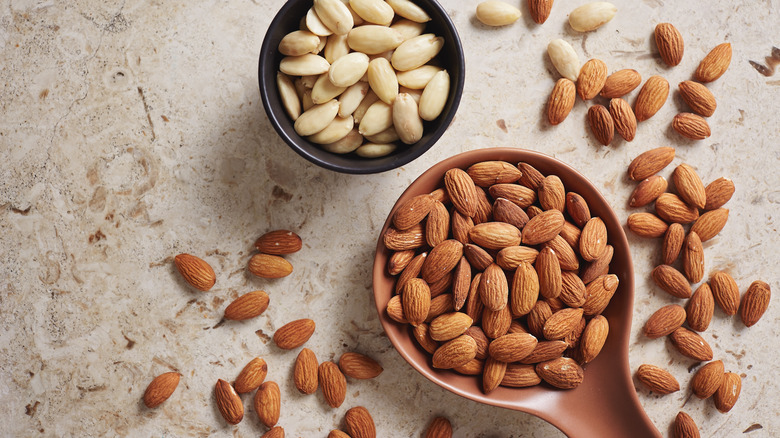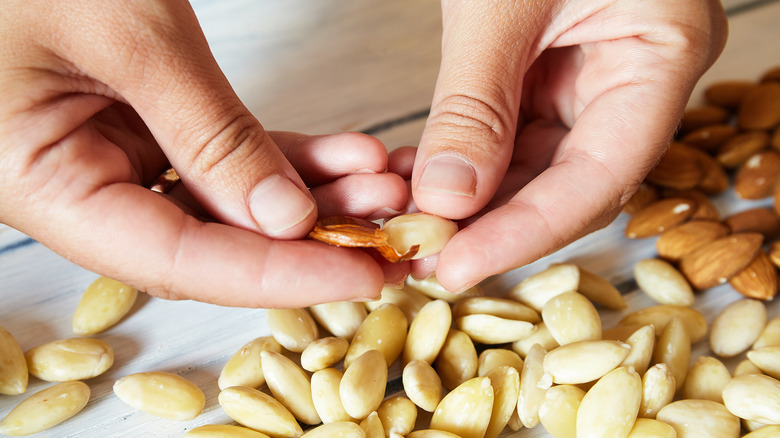The Best Way To Blanch Almonds (& Why It's Worth The Effort)
If you've ever tried to make marzipan, almond flour, or cook biscotti, you've likely encountered blanched almonds. Maybe you've seen blanched almonds — bare white nuts stripped of their brown shells — being sold at the grocery store, where they typically cost a pretty penny.
Blanching is a process that involves steaming, boiling, or frying fruits or vegetables for a short period of time. While it's typically used in food preservation, blanching also makes it easy to remove delicate skins from foods like almonds, tomatoes, or peaches.
Blanched almonds give your recipes a cleaner appearance: They're key to keeping those unattractive brown flecks out of your marzipan or almond flour. But blanching isn't just cosmetic. Stews and sauces often require blanched almonds to prevent the skins from flaking off during the cooking process. In recipes where subtlety is key, like French macarons or Greek vaselopita, blanching can help improve the taste. That's because almond skin contains tannins, bitter compounds found in chocolate, tea, and wine.
Blanching can affect nutritional value, too. According to one study, blanching helped reduce the phytic acid found in almond skin, an antinutrient that can affect digestion and prevent your body from absorbing helpful minerals like calcium and potassium.
Industrial facilities run the nuts through large rubber rollers to remove the loosened skins, but there's no need to run out and buy pre-blanched almonds if you've already got a bag of raw almonds at home. Blanching almonds is easy and doesn't require any special equipment.
How do you blanch almonds?
To blanch almonds, dump raw, unshelled almonds into a pot of boiling water and let them boil for exactly one minute. Be careful not to overboil them — too much time on the stove, and they'll get soft. Blanching should soften the almonds just enough to loosen the skins without cooking them so much that they lose their crunchy texture.
After one minute, turn off the heat, strain the almonds, and dunk them in a bowl of cold water. This is known as "shocking." Since blanching typically only takes a minute or so, a few extra seconds of heat can make a big difference. Shocking prevents food from cooking further once it's removed from the heat source.
Once they're cool, take an almond out and gently squeeze one end. The skin should slide right off. Repeat for the rest of the almonds. If you're having trouble removing the skins, you could be using the wrong kind of almonds. Nonpareil and California almonds should blanch easily, but avoid mission almonds. Their tough, wrinkly skin makes them difficult to blanch.
Once all the almonds are skinned, pat them dry. If you're not toasting them or using them right away, you may want to spread them out on a baking sheet and leave them for a few hours, then transfer them to an airtight container. They'll last for a month in the fridge, but try to use them in two weeks if you're storing them in the pantry.

